This article was medically reviewed by Lacy Windham, MD. Lacy Windham, MD, is a Board-Certified Obstetrician & Gynecologist in Cleveland, Tennessee. Dr. Windham attended medical school at the University of Tennessee Health Science Center in Memphis. Her residency was completed at Eastern Virginia Medical School in Norfolk, Virginia. She was the recipient of multiple awards during her residency training, including Most Outstanding Resident in Maternal Fetal Medicine, Most Outstanding Resident in Oncology, Most Outstanding Resident Overall, and Special Award in Minimally Invasive Surgery.
There are 21 references cited in this article, which can be found at the bottom of the page.
This article has been viewed 558,167 times.
There are many reasons that hopeful parents might wish to have a baby girl. Perhaps you already have a son (or two or three!). Perhaps you are worried that you might pass along a sex-specific genetic disorder. Or perhaps you just have a personal preference about the sex of your baby. The only guaranteed methods of ensuring a baby's sex take place post-fertilization in a medical facility or laboratory, under the care of medical professionals.[1] However, there are a number of folk remedies and pre-fertilization techniques that some people say might help influence your baby's sex. Perhaps you'll find that, though these techniques are disputed, they're worth a shot. But no matter what: a 50/50 chance isn't so bad, right?
Steps
Using Dietary Changes to Try to Influence the Sex of Your Baby
-
1Talk to your doctor about making dietary changes. Dietary changes remain a controversial method of influencing a baby's sex. Many doctors and scientists doubt that diet can exert any strong influence on a child's sex and consider the sex of a baby to be based on random chance. [2] Nevertheless, if your doctor says that it is safe for you to adjust your diet to promote having a girl baby, there is little harm in trying a "girl diet."
-
2Change your diet to change your body chemistry. Dietary changes can supposedly affect your likelihood of conceiving a girl by altering the mineral content and acidity of the uterine environment. According to this theory, a woman's diet in the weeks leading to conception can make her body more "friendly" toward X chromosome sperm (which lead to a baby girl) and less "friendly" toward Y chromosome sperm (which lead to a baby boy).[3]
-
3Eat a diet high in calcium and magnesium. Recommended foods on a diet conducive to having a girl include low-sodium dairy products, eggs, rice, and low-sodium breads and crackers.[4] Fruits and vegetables might also help you conceive a girl.
-
4Avoid potassium and sodium-rich foods. A 2008 study found that women who ate potassium-rich cereals were more likely to conceive boys. [5] Other potassium-rich foods include bananas, salmon, mushrooms, beans, tuna, sweet potatoes, and potatoes.
Timing Conception to Influence a Baby's Sex
-
1Track your ovulation cycle. You can time your ovulation in many ways. The most accurate method is to use an ovulation predictor kit (OPK). If you have a regular menstrual cycle, you can also predict the date range of ovulation by counting back 12-16 days from the date your last period started, though the prediction might not be entirely accurate.[6]
- Keeping track of ovulation can also increase your likelihood of conceiving at all (regardless of sex) because women are usually the most fertile in the few days prior to ovulation.[7]
- Other signs of ovulation include abdominal pain, changes in vaginal fluids, and changes in basal body temperature. Consider tracking your cycle carefully on a calendar in order to understand how your body responds to ovulation.[8]
-
2Have sex 2-4 days before ovulation to conceive a girl. Female sperm carry more genetic material, making them heavier and slower than male sperm. Having sex at least two days before ovulation gives the slower female sperm more time to move up the uterine canal before the egg arrives.[9] This is known as the "Shettles Method."
- There is an alternate theory known as the "Whelan Method" that suggests that sex should take place 2-3 days prior to ovulation to conceive a girl and 4-6 days before ovulation to conceive a boy. [10]
Using Medical Procedures to Conceive a Girl
-
1Determine what you are willing to spend on sex selection. While medical procedures are the most foolproof method for having a girl, they are also the most expensive. They can cost anywhere from several hundred dollars to tens of thousands of dollars. Sometimes these procedures are not available in every country, leading to additional travel costs as well. [11] Set a budget in order to plan how you might pay for the procedure.
-
2
-
3Pursue sperm sorting techniques with a clinic. It is possible to sort sperm into Y-chromosomal and X-chromosomal sperm using a technique known as cytometric sorting, after which an egg is fertilized with the desired sperm using artificial insemination or in vitro fertilization. Because X chromosomes are slightly larger than Y chromosomes, sperm that lead to girls are able to absorb more fluorescent dye than sperm that lead to boys. The sperm can then be separated, and the desired sex of a baby can be chosen.[14] Sperm sorting is highly effective, though it is not 100% effective. [15] It can, however, be costly and might not be available for all prospective parents.
-
4Look into the "swim up" method of artificial insemination. Many reproductive clinics offer to sort sperm by their speed of movement. Because sperm carrying female genetic material tend to be heavier (and therefore slower), this sorting can make a specific sex much more likely, though not guaranteed.[16]
-
5Pursue preimplantation genetic diagnosis (PGD). This procedure can be done on embryos created using in vitro fertilization. It allows doctors to identify embryos of a certain sex, thus providing sex selection prior to embryonic implantation. In addition to identifying (and potentially selecting) embryos of a certain sex, chromosomal disorders and conditions can be identified using PGD.[17]
- Though highly effective, the procedure is costly and invasive, and it raises ethical dilemmas about the appropriateness of sex selection of embryos. In fact, sex screening is banned in some places. Certain countries, like Britain, make exceptions only when there is a medical necessity to screen for sex, such as sex-specific genetic diseases.[18]
- Other doctors similarly support post-fertilization sex selection in cases of medical necessity, but reject post-fertilization sex selection practices because of personal preference.
- The procedure works by identifying the sex of an embryo while it is still in the lab before it is placed in the womb, and claims 100% accuracy.
Warnings
- Although many reproductive specialists offer sex selection procedures for any reasons, some consider it unethical to select for sex based on preference alone.⧼thumbs_response⧽
- Talk to your doctor before making any drastic dietary changes (including taking new vitamin/mineral supplements) to make sure that they are safe and do not interfere with any medications you might be taking, or with any preexisting medical conditions you may have.⧼thumbs_response⧽
- Many medical professionals do not believe it is possible to influence a baby's sex through such means as dietary changes, sex positions, or timing the ovulation cycle. [22] Even so, some companies claim that they have found the key to sex selection. Be wary of any pre-fertilization services that guarantee your baby's sex: they can be expensive and might not be effective.⧼thumbs_response⧽
- There are certain black-market sex-selection drugs that not only are ineffective at influencing a baby's sex but also have the potential to actively harm a fetus. Do not take any medications or supplements without discussing them with a licensed physician. [23]⧼thumbs_response⧽
- Sex is not equivalent to gender; it is possible that your child will not identify with the sex they were assigned at birth. Be sure to support your child, no matter what gender he, she, or they might be.[24]⧼thumbs_response⧽
- Some of the most surefire methods of ensuring a baby's sex are also the most controversial and might raise ethical questions and concerns. Be sure that you think carefully about the implications of your reproductive choices.[25]⧼thumbs_response⧽
References
- ↑ https://health.clevelandclinic.org/boy-or-girl-can-you-choose-your-babys-sex/
- ↑ http://rspb.royalsocietypublishing.org/content/276/1660/1211.full
- ↑ http://www.babymed.com/food-and-nutrition/diet-may-influence-baby-gender
- ↑ http://www.babymed.com/food-and-nutrition/diet-may-influence-baby-gender
- ↑ http://www.npr.org/templates/story/story.php?storyId=99346281
- ↑ http://www.babycenter.com/0_how-to-know-when-youre-ovulating_10334238.bc
- ↑ http://www.babycenter.com/0_how-to-know-when-youre-ovulating_10334238.bc
- ↑ https://www.nhs.uk/common-health-questions/womens-health/how-can-i-tell-when-i-am-ovulating/
- ↑ http://www.babycentre.co.uk/a1014303/the-science-behind-sex-selection
- ↑ http://www.babycentre.co.uk/a1014303/the-science-behind-sex-selection
- ↑ https://www.cnbc.com/2018/08/04/fertility-clinics-advertise-gender-selection-ethical-wuandary.html
- ↑ http://health.clevelandclinic.org/2014/10/boy-or-girl-can-you-choose-your-babys-gender/
- ↑ http://www.geneticsandsociety.org/article.php?id=83
- ↑ http://journalofethics.ama-assn.org/2012/02/ccas3-1202.html
- ↑ http://www.rbej.com/content/12/1/106
- ↑ https://medcraveonline.com/OGIJ/does-gradients-or-swim-up-procedure-produce-baby-of-desired-gender.html
- ↑ https://americanpregnancy.org/getting-pregnant/infertility/preimplantation-genetic-diagnosis/
- ↑ https://www.hfea.gov.uk/treatments/embryo-testing-and-treatments-for-disease/pre-implantation-genetic-testing-for-monogenic-disorders-pgt-m-and-pre-implantation-genetic-testing-for-chromosomal-structural-rearrangements-pgt-sr/
- ↑ https://www.babycenter.com/pregnancy/your-life/gender-disappointment_40009118
- ↑ http://www.parents.com/pregnancy/my-baby/gender-prediction/baby-gender-disappointment/
- ↑ http://www.health-and-parenting.com/cope-gender-disappointment/
- ↑ http://health.clevelandclinic.org/2014/10/boy-or-girl-can-you-choose-your-babys-gender/
- ↑ https://www.ncbi.nlm.nih.gov/pmc/articles/PMC4560877/
- ↑ https://kidshealth.org/en/parents/sexual-orientation.html
- ↑ https://www.ncbi.nlm.nih.gov/pmc/articles/PMC4456876/
About This Article
While you can’t guarantee the gender of your baby, there are numerous folk remedies and pre-fertilization techniques that you can try to conceive a girl. For example, eat a diet high in calcium and magnesium, like eggs, rice, fruits, and vegetables, to help your body be more likely to conceive a girl. In addition to your diet, have sex 2 to 4 days before you ovulate, since sperm with female genes carry more genetic material and travel more slowly than sperm with male genes. If you want to look at medical interventions, talk to your doctor about the costs and risks of preimplantation genetic diagnosis, or PGD. For more tips from our Medical co-author, like how to use sperm sorting to conceive a girl, keep reading!

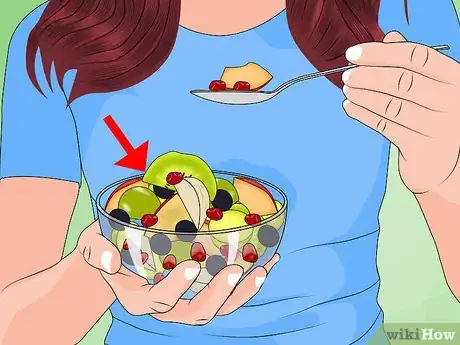


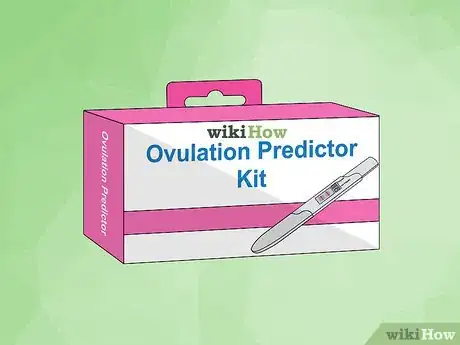
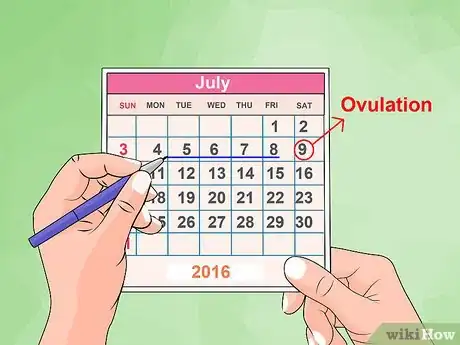




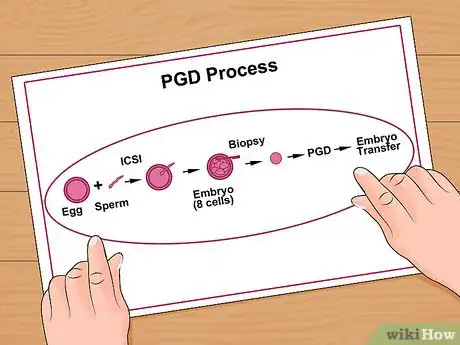


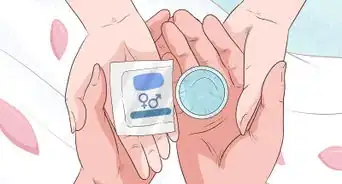





















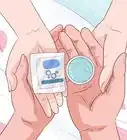





































Medical Disclaimer
The content of this article is not intended to be a substitute for professional medical advice, examination, diagnosis, or treatment. You should always contact your doctor or other qualified healthcare professional before starting, changing, or stopping any kind of health treatment.
Read More...